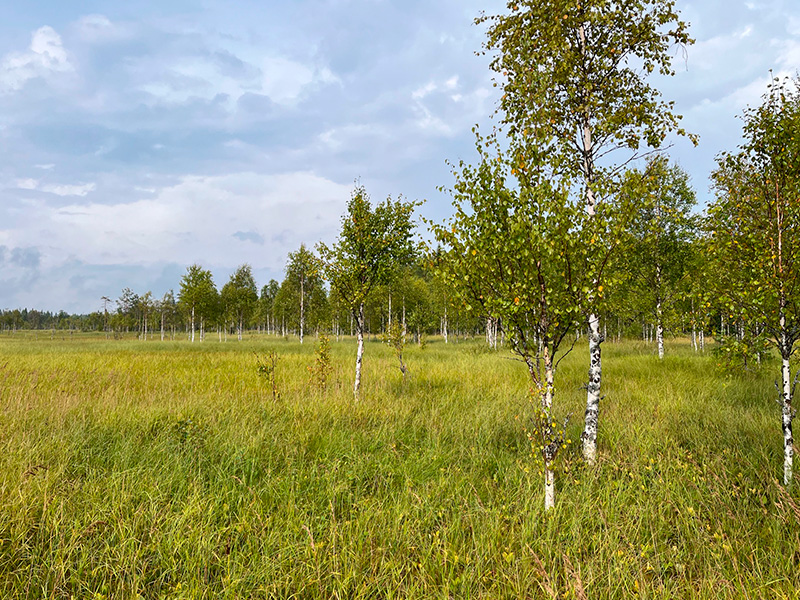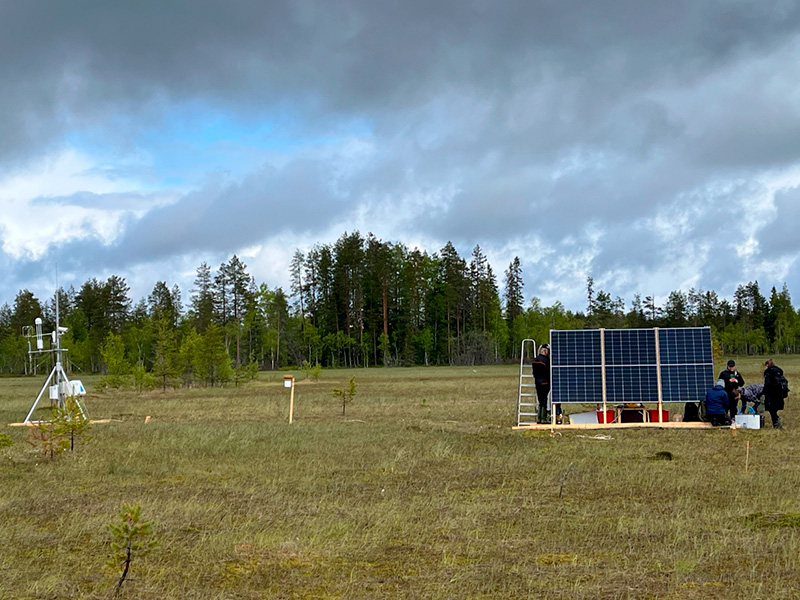REWET Open Lab 3
Ylpässuo, Kiuruvesi, Finland

Location:
Ylpässuo, Kiuruvesi, Finland
Type of wetland:
Peatland
Size:
11 Ha
Site manager:
Natural Heritage Foundation
OL coordinator (organisation and country):
University of Eastern Finland
Conserving Ylpässuo Mire
Preserving Diversity: The Battle for Finland’s Mires
Ylpässuo is a small, beautifully landscaped minerotrophic open mire in the northwest corner of Pohjois-Savo in Kiuruvesi, with several endangered plant and bird species. The landscape is characterized by numerous small forested islands with natural trees. The area is a natural reserve conserved by The Natural Heritage Foundation after donation by University of Eastern Finland (UEF).
A total of 54 per cent of Finland's 50 mire habitats are endangered and a further 20 per cent are near threatened. In addition to the endangered nature of mire species and habitats, extensive drainage can also be seen as damaging the water bodies, in a loss of carbon stocks from mires, and as other weakened ecosystem services. A new threat to the mire habitats is the peeling of sphagnum moss from the surface of the mire. The site is now in natural state, recovering from the drainage treatments in surrounding forested area.

Restoring the Northern Boreal Mire
Revitalizing Ecosystems: Balancing Nature and Culture in Finland's Mires

The site is representing the Northern Boreal zone, with long winters are short growing seasons. In particular methane emissions due to winter are very interesting and less studied.
The 11 ha mire area has been affected in the past decades by the edge draining due to forestry management actions, typical in Finland. The protected area will be restored to regain the original watery mire characters. The aim of restoration is to improve the condition of ecosystems in a cost-effective way. Regionally, the greatest social impacts of restoration are likely to be caused by wet and heavily ditch drained areas. Restoration will restore the recreational values of the mires (hunting, berry-picking and hiking, for example) and promote the functioning of cultural ecosystem services.
Monitoring Mire Restoration
Advancing Mire Science: Innovative Techniques for Ecological Health
Carbon fluxes will be measured with Eddy Covariance tower and water quality will be investigated. The effects of restoration and re-wetting of the mire on the greenhouse gas balances and ecosystem functioning will be examined with on-site CO2, CH4 and N2O flux measurements. Data from CO2 fluxes will be available also from Eddy covariance towers, to be installed on site. Diversity of plants, mosses, insects, bird and amphibian communities will be examined with standard ecological methodologies, integrated with data obtained from novel airborne hyperspectral imaging tools.
